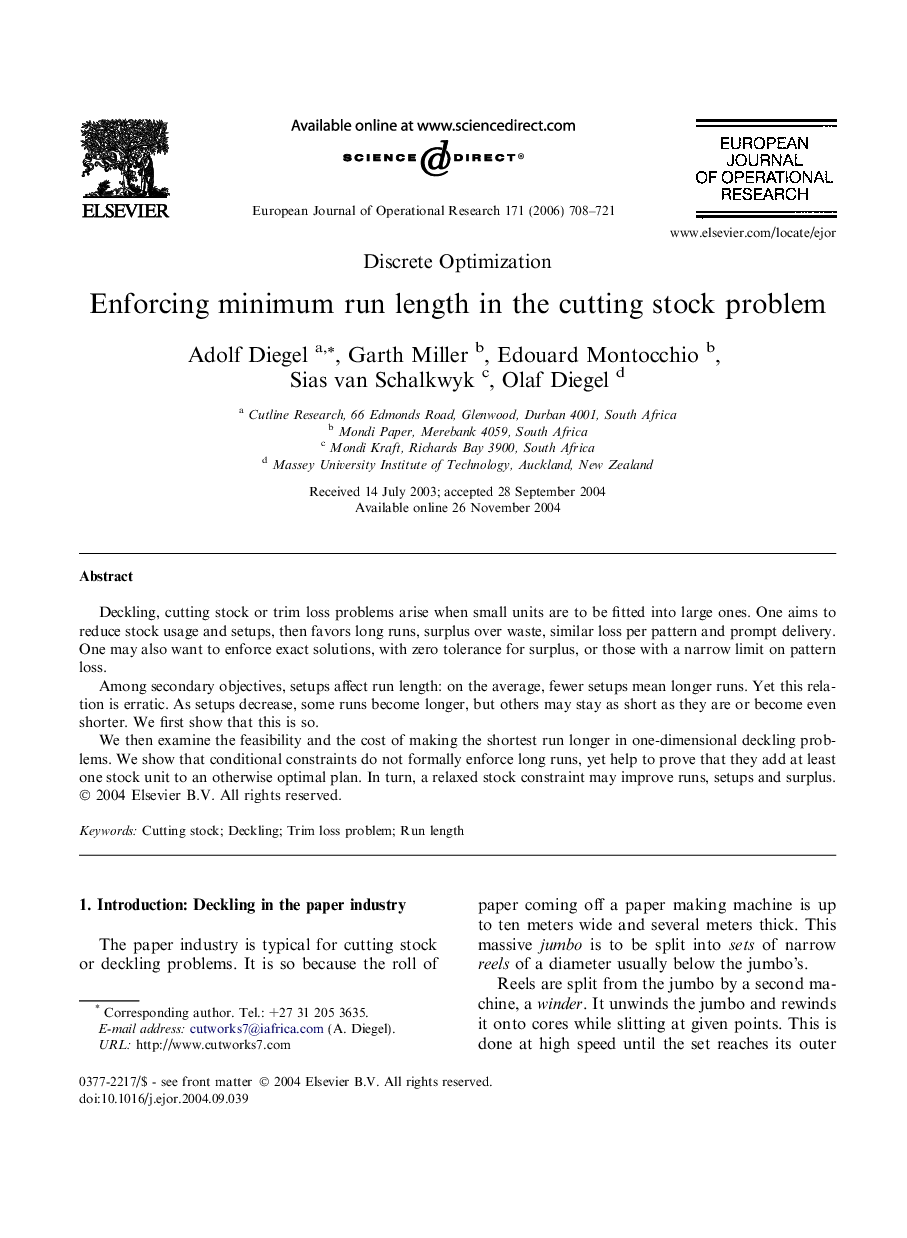| Article ID | Journal | Published Year | Pages | File Type |
|---|---|---|---|---|
| 483351 | European Journal of Operational Research | 2006 | 14 Pages |
Deckling, cutting stock or trim loss problems arise when small units are to be fitted into large ones. One aims to reduce stock usage and setups, then favors long runs, surplus over waste, similar loss per pattern and prompt delivery. One may also want to enforce exact solutions, with zero tolerance for surplus, or those with a narrow limit on pattern loss.Among secondary objectives, setups affect run length: on the average, fewer setups mean longer runs. Yet this relation is erratic. As setups decrease, some runs become longer, but others may stay as short as they are or become even shorter. We first show that this is so.We then examine the feasibility and the cost of making the shortest run longer in one-dimensional deckling problems. We show that conditional constraints do not formally enforce long runs, yet help to prove that they add at least one stock unit to an otherwise optimal plan. In turn, a relaxed stock constraint may improve runs, setups and surplus.
